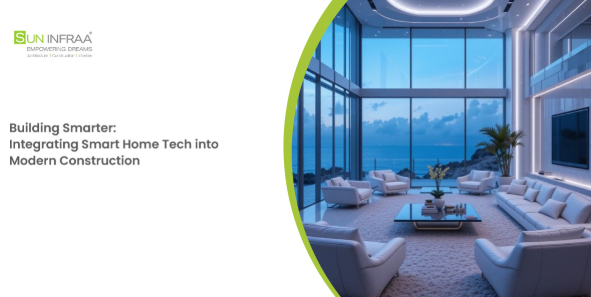Building Smarter: Integrating Smart Home Tech into Modern Construction
Modern homes are no longer just about bricks and walls—they are about smart features that make life easier, safer, and more comfortable. As technology continues to grow, the construction industry is shifting to meet the demands of smarter living. Today, many new homes are being built with smart systems already included, offering better control, energy savings, and convenience.
Let’s explore how smart home technology is being integrated into modern construction and why it’s becoming a must-have in today’s housing market.
1. What Is a Smart Home?
A smart home uses technology to automate and control different functions of the house. This includes lighting, temperature, security, entertainment systems, and even kitchen appliances. These devices can often be controlled through smartphones, tablets, or voice commands.
Smart homes offer a higher level of comfort and efficiency, and they’re easier to manage—whether you’re at home or away.
2. Planning Smart from the Start
One of the best ways to add smart features to a home is during the construction phase. This allows builders to install wiring, sensors, and other necessary components behind the walls before the finishing work begins. It avoids the mess and cost of retrofitting these systems later.
Planning ahead also ensures that all smart systems can connect smoothly with each other. This creates a fully integrated home where everything works together in harmony.
3. Smart Lighting and Energy Efficiency
Smart lighting systems are popular in new homes. These systems allow homeowners to control lights remotely, schedule lighting times, or use motion sensors to turn lights on or off automatically. This saves electricity and extends the life of bulbs.
Similarly, smart thermostats help regulate temperature based on daily routines. These devices learn the homeowner’s habits and adjust heating or cooling for comfort and energy savings.
4. Security and Safety Upgrades
New homes can now come equipped with smart locks, video doorbells, cameras, and motion detectors. These features allow homeowners to monitor their property in real time and receive alerts on their phones.
Smoke detectors, carbon monoxide alarms, and leak sensors can also be connected to the system, providing extra safety and peace of mind.
5. Smart Wiring and Connectivity
Modern construction often includes structured cabling systems that support high-speed internet and strong network connections. This is important because most smart devices rely on Wi-Fi or other data connections to work properly.
Built-in hubs or control panels can also be included to allow central management of all devices from one place.
6. Future-Ready Homes
Homes built with smart technology are future-ready. As new devices and upgrades become available, they can be added easily without major changes. This increases the home’s value and appeal in the long run.
Conclusion
Integrating smart home technology into modern construction is not just a trend—it’s the future of living. By planning smartly from the beginning, builders can create homes that are safer, more efficient, and easier to live in. As technology continues to improve, smart homes will become the new standard, offering comfort and convenience for years to come.



